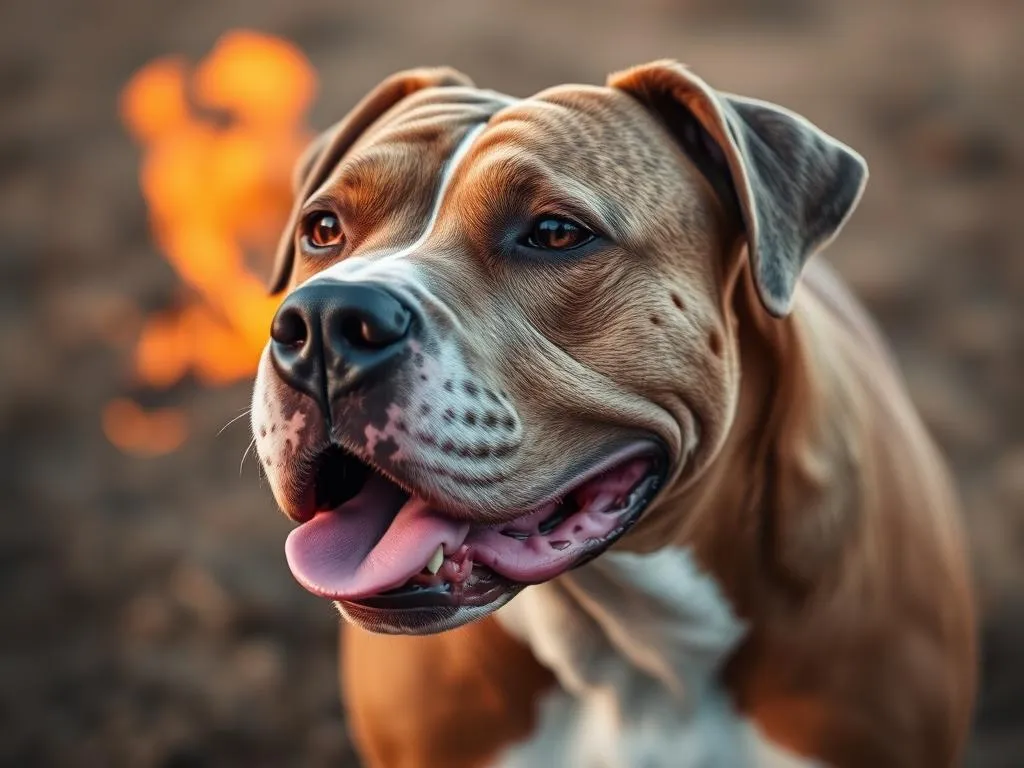
Understanding your dog’s reproductive health is an essential aspect of responsible pet ownership. Among various breeds, pitbulls are known for their loyalty, strength, and affectionate nature. However, as a pitbull owner, it’s crucial to comprehend the intricacies of their reproductive cycle, particularly when does a pitbull go into heat. This article will guide you through the essentials of dog reproductive health, focusing on the heat cycle, care during this period, and common health issues that may arise.
Understanding Dog Reproductive Health
Basics of Canine Reproduction
To grasp the concept of a pitbull’s heat cycle, one must first understand the basics of canine reproductive anatomy. Female dogs possess a set of reproductive organs distinct from their male counterparts. The primary components include the ovaries, fallopian tubes, uterus, and vagina.
- Ovaries: These are responsible for producing eggs and hormones.
- Uterus: This organ supports a developing fetus if fertilization occurs.
- Vagina: The passage leading from the external genitals to the uterus.
Male dogs have a different system, primarily consisting of testes, which produce sperm and hormones, including testosterone.
The Heat Cycle
The heat cycle, or estrous cycle, is a natural part of a female dog’s reproductive health. It plays a significant role in breeding and involves several stages: proestrus, estrus, diestrus, and anestrus.
- Proestrus: This stage lasts about 7-10 days and is marked by swelling of the vulva and a bloody discharge, indicating that the female is preparing for mating.
- Estrus: Lasting approximately 5-10 days, this stage is when the female is fertile and receptive to males.
- Diestrus: This period may last around 60-90 days, during which the female is no longer receptive to mating, regardless of whether she is pregnant.
- Anestrus: The resting phase that follows diestrus, lasting several months until the next heat cycle begins.
Understanding these stages helps you to track your pitbull’s reproductive health effectively.
When Does a Pitbull Go Into Heat?
Typical Age for First Heat
A common query among pitbull owners is when does a pitbull go into heat? Typically, pitbulls experience their first heat cycle between six months and a year of age. However, several factors can influence this timing, including:
- Breed: Larger breeds may take longer to reach sexual maturity.
- Health: A healthy pitbull may enter heat earlier than one with health issues.
- Size: Smaller dogs generally mature faster than larger breeds.
Being aware of these factors helps you monitor your dog’s development and prepare for her heat cycle.
Frequency of Heat Cycles
Once a pitbull has her first heat, she will typically experience heat cycles every six to eight months. Each cycle lasts about three weeks, but the duration can vary from dog to dog.
Understanding the frequency and duration of these cycles is crucial for managing your pitbull’s reproductive health and behavior.
Signs a Pitbull is in Heat
Recognizing the signs that your pitbull is in heat is essential. Some physical signs include:
- Swelling of the vulva: This is often the most noticeable sign.
- Discharge: You may see blood-tinged discharge from the vagina.
Behavioral changes are also common during this period:
- Increased affection: Your pitbull might seek more attention and affection than usual.
- Restlessness: She may appear anxious or agitated.
Being attentive to these signs will help you provide the necessary care during this time.
Caring for a Pitbull in Heat
Managing Behavioral Changes
When your pitbull is in heat, you may notice changes in her behavior. Here are some tips for managing these changes:
- Exercise: Regular physical activity can help alleviate anxiety and restlessness.
- Mental Stimulation: Engaging your dog with puzzles or training can distract her from the heat cycle.
Hygiene and Health Considerations
Maintaining hygiene during your pitbull’s heat cycle is vital for her health and comfort. Here are some recommendations:
- Cleanliness: Use doggy diapers or pads to keep your home clean and prevent stains.
- Vet Check-ups: Regular veterinary visits are essential to monitor your pitbull’s reproductive health.
Preventing Unwanted Pregnancies
To prevent unwanted pregnancies, consider the following options:
- Spaying: This procedure removes the ovaries and uterus, eliminating heat cycles and the risk of pregnancy.
- Indoor Management: Keeping your pitbull indoors during her heat cycle can prevent her from mating.
Responsible ownership includes understanding how to manage your pitbull’s heat cycle effectively.
Common Health Issues Related to Heat Cycles
Pyometra
One significant health concern for female dogs is pyometra, a severe uterine infection that can occur after heat cycles. Symptoms to watch for include:
- Lethargy: Your dog may seem unusually tired or uninterested in activities.
- Increased thirst and urination: These are common signs of illness in dogs.
- Vaginal discharge: This may be pus-like and indicate a serious infection.
If you notice these symptoms, seeking immediate veterinary care is crucial, as pyometra can be life-threatening.
Hormonal Imbalances
Hormonal imbalances can also affect your pitbull’s health, leading to irregular heat cycles or other reproductive issues. Signs may include:
- Irregular cycles: Heat cycles that are too frequent or infrequent.
- Unusual behaviors: Increased aggression or anxiety can indicate hormonal changes.
Consulting with your veterinarian can help identify and address these issues effectively.
Spaying and Its Benefits
What is Spaying?
Spaying is a surgical procedure that removes a female dog’s ovaries and uterus. This procedure is often recommended to prevent unwanted pregnancies and eliminate heat cycles. It’s important to differentiate between spaying females and neutering males, which involves the removal of the testes.
Health Benefits of Spaying
Spaying offers several health benefits for your pitbull, including:
- Reduction of certain cancers: Spaying significantly lowers the risk of ovarian and uterine cancers.
- Prevention of infections: It eliminates the risk of pyometra, a severe reproductive health issue.
Additionally, spaying can positively impact behavior, reducing the likelihood of heat-related anxiety and aggression.
Timing for Spaying
When considering spaying your pitbull, timing is essential. Most veterinarians recommend spaying between six months and one year of age, but individual health considerations may alter this timeline. Discussing with your veterinarian will help you determine the best timing for your pitbull based on her specific needs.
Conclusion
Understanding when does a pitbull go into heat is a vital aspect of responsible pet ownership. By being informed about your dog’s reproductive health, you can manage her needs effectively and prevent potential health issues. Regular veterinary check-ups and responsible management during heat cycles will contribute to your pitbull’s overall well-being and happiness.
FAQs
What should I do if my pitbull is in heat?
Ensure she is comfortable and monitor her closely for any unusual behavior. Maintain hygiene and consider using doggy diapers.
Can I walk my pitbull while she is in heat?
Yes, you can walk her, but it’s advisable to keep her on a leash and avoid areas with male dogs to prevent unwanted mating.
How can I tell if my pitbull is pregnant?
Signs of pregnancy can include changes in appetite, weight gain, and behavioral changes. A veterinary visit is necessary for confirmation.
What are the risks of not spaying my pitbull?
Not spaying can lead to unwanted litters, increased risk of certain cancers, and potential health complications like pyometra.
Understanding these aspects of your pitbull’s reproductive health can enhance your relationship and ensure her well-being.









